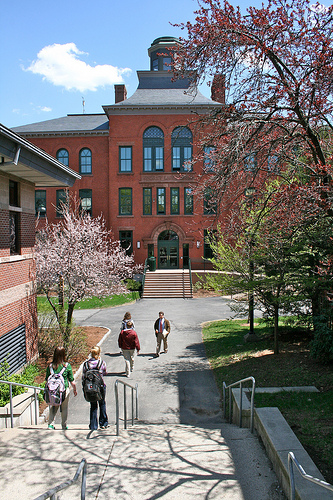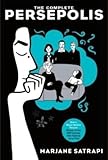 The first time I ever heard anything about the country of Iran was when I was in second grade. Americans had been taken hostage at the American Embassy in Tehran. We wrote letters to the hostages, and I remembered very clearly that a boy in my class wrote in his letter, “I hope you don’t get shot.” Miss Johnson, my teacher, made him change it because, she said, while she was sure they would appreciate his hoping they wouldn’t get shot, he shouldn’t remind them of the possibility in a letter. They were already scared enough. I remembered thinking that these people must be crazy to kidnap people they didn’t know for no reason I could understand. I think a lot of Americans came to view Iranians as crazy fundamentalists, and it was easy to lump the entire country together under that label. [amazon_link id=”0375714839″ target=”_blank” ]Persepolis[/amazon_link] is a memoir by Marjane Satrapi, who experienced what it was like to live in Iran during the Islamic Revolution. She paints a different image of Iran and Iranians than many Americans my age and younger grew up seeing. She describes what it was like to feel hopeful when the Shah was deposed, only to find the revolution was not what she and her family expected, and in many ways, their lives were worse. Satrapi suddenly had to wear a veil to school. Satrapi was outspoken and frequently courted trouble. When she was fourteen, her parents sent her to school in Austria. She came back to Iran at the age of eighteen confused about who she was: she didn’t feel completely Iranian because her beliefs were out of step with those of her more traditional friends, but she didn’t feel Western, either.
The first time I ever heard anything about the country of Iran was when I was in second grade. Americans had been taken hostage at the American Embassy in Tehran. We wrote letters to the hostages, and I remembered very clearly that a boy in my class wrote in his letter, “I hope you don’t get shot.” Miss Johnson, my teacher, made him change it because, she said, while she was sure they would appreciate his hoping they wouldn’t get shot, he shouldn’t remind them of the possibility in a letter. They were already scared enough. I remembered thinking that these people must be crazy to kidnap people they didn’t know for no reason I could understand. I think a lot of Americans came to view Iranians as crazy fundamentalists, and it was easy to lump the entire country together under that label. [amazon_link id=”0375714839″ target=”_blank” ]Persepolis[/amazon_link] is a memoir by Marjane Satrapi, who experienced what it was like to live in Iran during the Islamic Revolution. She paints a different image of Iran and Iranians than many Americans my age and younger grew up seeing. She describes what it was like to feel hopeful when the Shah was deposed, only to find the revolution was not what she and her family expected, and in many ways, their lives were worse. Satrapi suddenly had to wear a veil to school. Satrapi was outspoken and frequently courted trouble. When she was fourteen, her parents sent her to school in Austria. She came back to Iran at the age of eighteen confused about who she was: she didn’t feel completely Iranian because her beliefs were out of step with those of her more traditional friends, but she didn’t feel Western, either.
The version I read contains the complete graphic novel, spanning Satrapi’s life from the late 1970’s to the mid-1990’s. I liked the artwork. It was simple but effective, and I found Satrapi’s story so captivating that I read the novel in a matter of hours (although it is true that graphic novels are quicker to read). I have not read many graphic novels. In fact, this is only my second, the other being [amazon_link id=”0394747232″ target=”_blank” ]Maus I: A Survivor’s Tale: My Father Bleeds History[/amazon_link]. I didn’t like Maus all that much, and I have never been much of a comic book reader, so I think I told myself I didn’t like graphic novels. This graphic novel was excellent, though. I found Satrapi’s description of life in Iran and her parents interesting. I think growing up when I did, it was easy to see the people of Iran as “the enemy” and to forget they are not terribly different from us, and what this book does brilliantly is expose that prejudice to the reader. Reading this memoir, I do not have the sense it was written for an Iranian audience. It feels more like it was meant to educate Westerners, and it certainly changed my perspective. We have our own religious extremists here in America, but the difference is that our government allows dissent, and we’re not yet living in the Republic of Gilead.* I enjoyed the fact that the memoir was an unflinchingly honest examination of Satrapi’s coming of age, but also not without quite a fair amount of humor, even the face of difficult circumstances and devastating events. Ultimately, Satrapi’s memoir is the story of how she discovered who she is and what she wanted. I would recommend it to anyone who thinks they don’t like graphic novels. Anyone who already enjoys graphic novels will love this book.
*A reference to the government established by the Religious Right in Margaret Atwood’s novel [amazon_link id=”B003JFJHTS” target=”_blank” ]The Handmaid’s Tale[/amazon_link].
Rating:




I read this novel to fulfill the Graphic Novels and Manga category of the Mixing it Up Challenge.





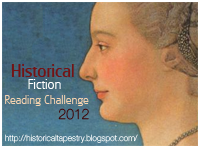
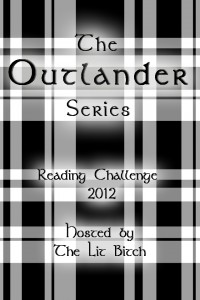
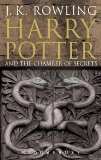


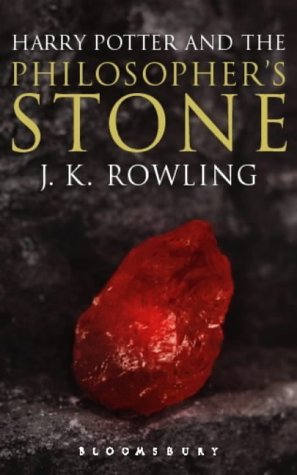
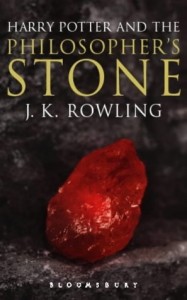 A friend of mine gave me the wonderful gift of all of the Harry Potter books in e-book format. I just reread the first on my Kindle, and I must say that visiting Harry Potter’s wizarding world feels as comfortable as curling up under a warm blanket, snug against the cold. I realized on this reading that I have much of the book memorized at this point, but this was the first time I read the British version, Harry Potter and the Philosopher’s Stone. My friend managed to get the British versions of the books for me, and after reading just this one, I much prefer the British versions. I have always thought the American title for this book was foolish dumbing-down for Americans, as though Americans couldn’t be expected to be familiar with the Philosopher’s Stone. I remember being confused when I first read it, thinking that the Sorcerer’s Stone sounded a lot like the Philosopher’s Stone, and wondering why Rowling didn’t use that term, only to find out she did, but that her American editors changed it. Grrr.
A friend of mine gave me the wonderful gift of all of the Harry Potter books in e-book format. I just reread the first on my Kindle, and I must say that visiting Harry Potter’s wizarding world feels as comfortable as curling up under a warm blanket, snug against the cold. I realized on this reading that I have much of the book memorized at this point, but this was the first time I read the British version, Harry Potter and the Philosopher’s Stone. My friend managed to get the British versions of the books for me, and after reading just this one, I much prefer the British versions. I have always thought the American title for this book was foolish dumbing-down for Americans, as though Americans couldn’t be expected to be familiar with the Philosopher’s Stone. I remember being confused when I first read it, thinking that the Sorcerer’s Stone sounded a lot like the Philosopher’s Stone, and wondering why Rowling didn’t use that term, only to find out she did, but that her American editors changed it. Grrr.


